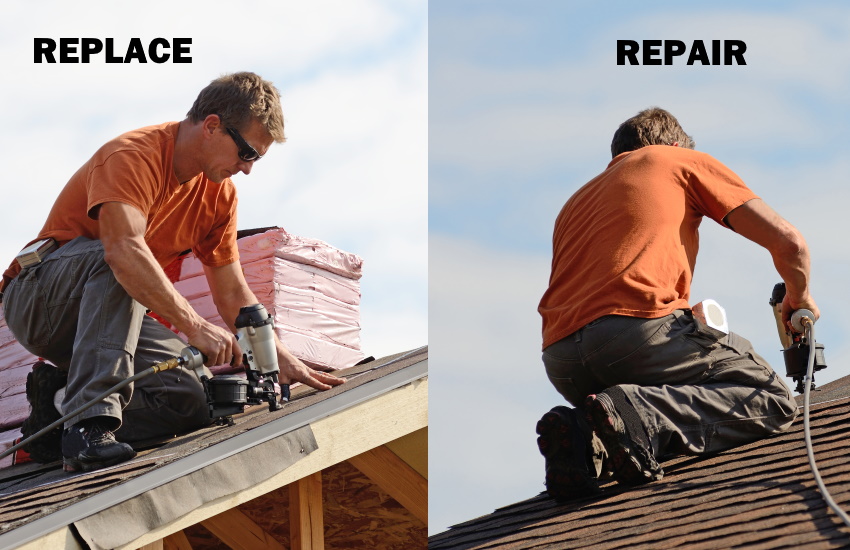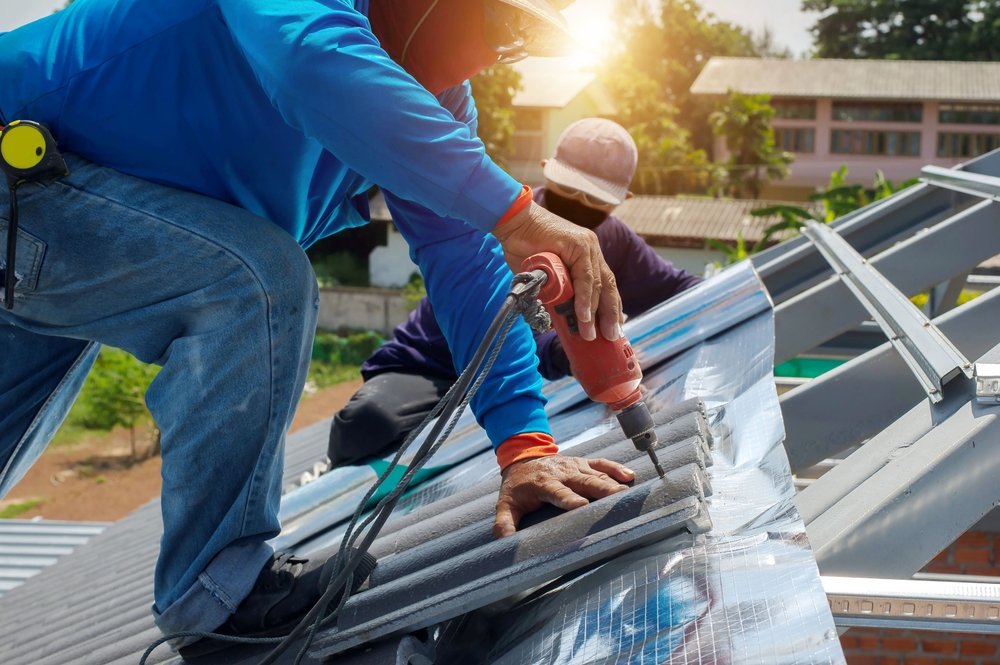Roof Repair Oahu: Specialist Roof Repairs for Lasting Protection
Understanding the Different Kinds Of Roof Coverings: A Comprehensive Overview for Homeowners
In the world of homeownership, picking the ideal roofing design is a choice that lugs considerable ramifications for both capability and aesthetic charm. With a range of choices-- varying from the standard gable to the contemporary level-- each type presents unique benefits and obstacles that need to line up with the home owner's environmental factors to consider and certain requirements. Comprehending these differences not just help in making an educated choice but additionally affects long-lasting maintenance and power effectiveness. As we explore the ins and outs of numerous roofing types, it comes to be evident that one dimension does not fit all; the right selection may stun you.
Saddleback Roof
Gable roofing systems, identified by their triangular form, are among one of the most prominent roofing styles due to their simpleness and performance in dropping water and snow. This style includes two sloping sides that meet at a ridge, enabling for reliable drainage and lessening the risk of water buildup. The high pitch frequently connected with gable roofings enhances their capability to manage hefty precipitation, making them suitable for different environments.
In enhancement to their useful benefits, gable roofs use aesthetic versatility. They can be adjusted to numerous architectural designs, from conventional to modern-day homes. The layout can likewise suit extra features such as dormer windows, which boost all-natural light and air flow in the attic room room.
Moreover, gable roofing systems offer adequate room for insulation, adding to power efficiency. Property owners can pick from a selection of roof covering materials, including asphalt shingles, steel, and floor tiles, better enhancing modification options.
Regardless of their benefits, gable roof coverings might need extra support in areas prone to high winds or heavy snowfall. On the whole, the saddleback roof continues to be a preferred option as a result of its blend of performance, resilience, and aesthetic allure.
Flat Roofs
Level roofing systems are typically recognized for their minimal design and practical applications, especially in commercial and commercial setups (oahu roofing). These roofings feature a nearly horizontal or straight surface area, which permits simple building and flexible space utilization. While they might do not have the aesthetic allure of angled roofs, flat roofings use various benefits, especially in city settings where maximizing area is critical
One of the main advantages of level roof coverings is their accessibility. Property owners can utilize the roofing system room for numerous purposes, such as roof yards, balconies, or solar panel installments. Furthermore, flat roofing systems are typically extra economical to install and maintain contrasted to their sloped equivalents, as they require fewer materials and labor.
Common materials utilized for flat roofings consist of built-up roof (BUR), customized bitumen, and single-ply membranes, each offering distinct benefits. On the whole, flat roofings offer as a versatile and useful selection for several property owners and businesses alike.
Hip Roofings
Hip roofing systems are identified by their sloped sides that converge on top, developing a ridge. This layout is unique from gable roofings, as all four sides of a hip roofing slope downwards toward the wall surfaces, providing a more secure framework. The angle of the slopes can vary, permitting versatility in architectural visual appeals and functionality.
One of the main advantages of hip roof coverings is their capability to stand up to hefty winds and negative weather. The sloped surfaces enable much better water drainage, minimizing the risk of leaks and water damages. Furthermore, hip roofs use boosted attic room, which can be utilized for storage space or even exchanged livable areas.
Nonetheless, constructing a hip roof covering can be much more costly and complex than easier roof types, such as saddleback roofs. The extra product and labor entailed in creating the slopes and making certain proper structural honesty can cause higher expenses. Despite these drawbacks, lots of house owners prefer hip roofs for their resilience, visual allure, and potential for energy effectiveness.
Mansard Roofings
Mansard roofings, typically identified by their distinct four-sided layout, feature 2 slopes on each side, with the lower slope being steeper than the upper. This building design, stemming from France in the 17th century, is not just aesthetically enticing yet functional, as it optimizes the usable space in the upper floors of a structure. The steep reduced incline allows for even more headroom, making it a perfect selection for attics or loft spaces, which you can check here can be exchanged living rooms.
Mansard roofing systems are defined by their versatility, suiting numerous architectural designs, from typical to contemporary. They can be built with various materials, including asphalt roof shingles, slate, or steel, giving homeowners with a variety of Visit Website alternatives to suit their choices and budget plans. In addition, the layout enables the integration of dormer windows, improving all-natural light and air flow in the upper degrees.
However, it is essential to take into consideration the potential drawbacks. Mansard roof coverings might call for even more maintenance due to the complexity of their layout, and their steep slopes can be testing for snow and rain drainage. On the whole, mansard roofing systems incorporate elegance with practicality, making them a prominent option among homeowners seeking unique architectural attributes.
Dropped Roofs
As homeowners significantly look for simpleness and capability in their architectural designs, shed roofs have become a popular choice. Characterized by a solitary sloping airplane, a shed roofing provides a minimalist aesthetic that matches different home styles, from contemporary to rustic.
One of the key benefits of a shed roof covering is its simple construction, which frequently equates to decrease labor and material costs. This layout enables for effective water drain, lowering the danger of leakages and water damage. In addition, the upright slope offers ample space for skylights, enhancing all-natural light within the inside.
Shed roofings also provide adaptability in regards to use. They can be effectively incorporated right into additions, garages, or outdoor structures like sheds and pavilions. Furthermore, this roofing style can accommodate numerous roof materials, including steel, asphalt tiles, and even eco-friendly roof coverings, lining up with green campaigns.
However, it is vital to think about regional click to read environment problems, as hefty snow lots may necessitate adjustments to the roofing's angle or structure. Generally, shed roof coverings offer a functional and aesthetically pleasing choice for home owners looking to take full advantage of capability without compromising design.
Conclusion


Gable roofs, characterized by their triangular shape, are among the most prominent roof covering styles due to their simplicity and efficiency in dropping water and snow. oahu roofing. The high pitch typically associated with gable roofings enhances their ability to take care of hefty rainfall, making them suitable for different environments
While they might do not have the aesthetic appeal of pitched roof coverings, level roofings supply many benefits, particularly in metropolitan settings where optimizing room is critical.
